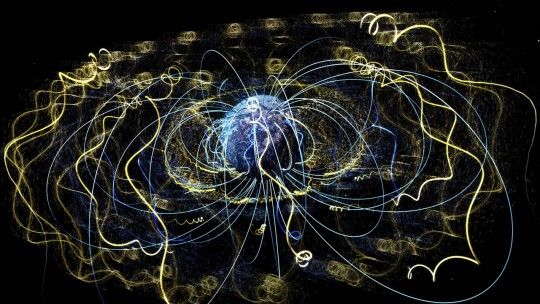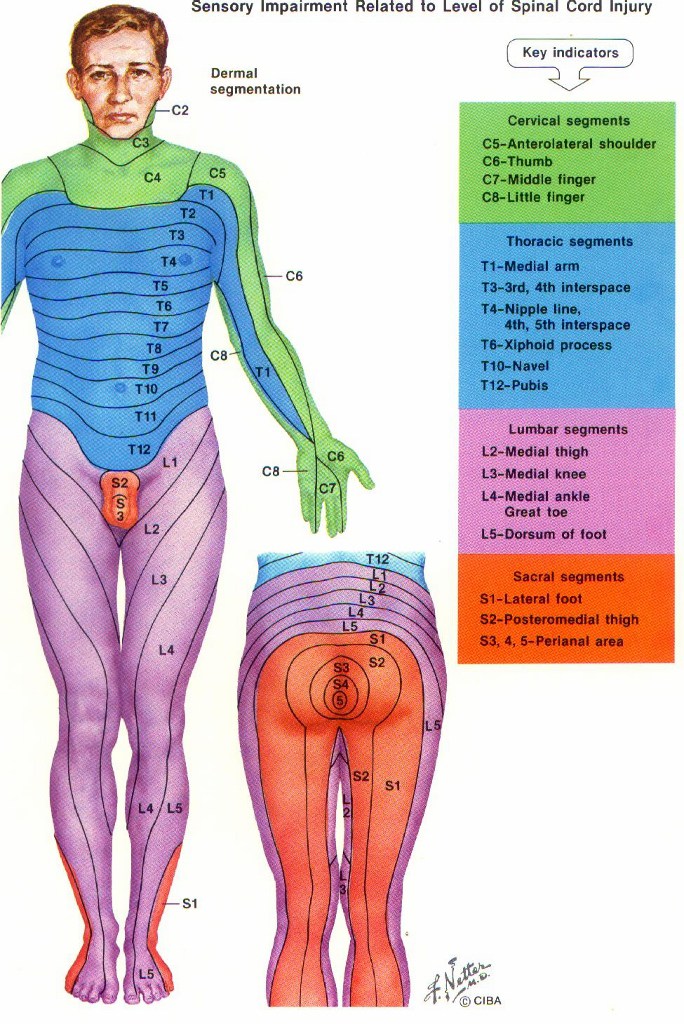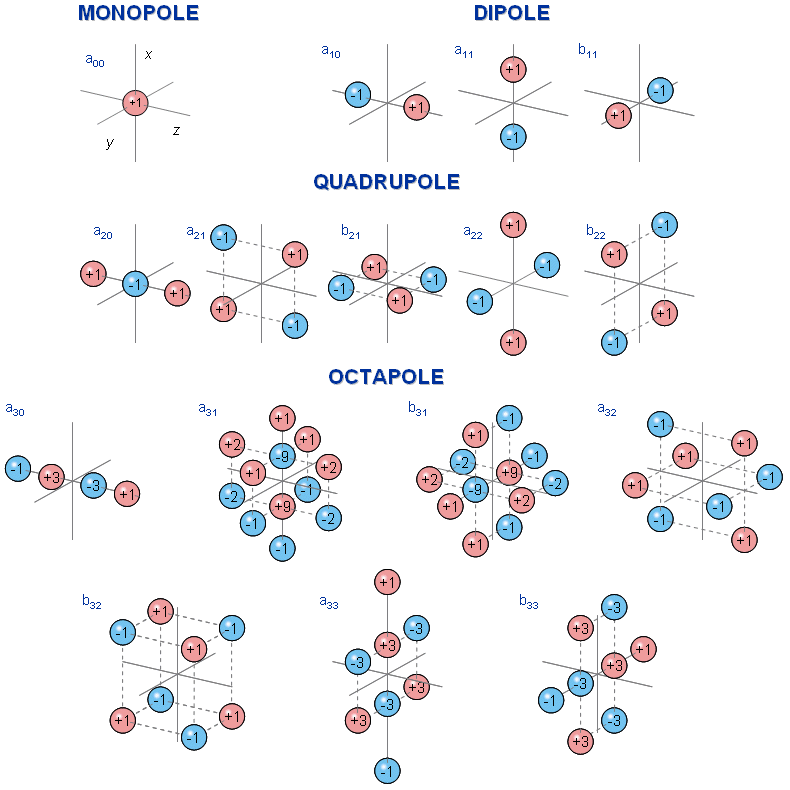-
Content count
308 -
Joined
-
Last visited
Posts posted by Jessup2
-
-
Very interesting is the fact that this energy can be stored in objects as simple as paper... the duration of storage and strength of it, plus the forces for release are being investigated.
Since the late 1980's the principal author has succeeded in storing (+) Qi Gong energy on a variety of substances including small sheets of paper, and recently has been able to intensify this energy by concentrating it as it passes through a cone-shaped, tapered glass or plastic object placed directly on the (+) Qi Gong energy stored paper. Application of (+) Qi Gong energy stored paper on the cardio-vascular representation area of the medulla oblongata at the occipital area of the skull often improved circulation and enhanced drug uptake.
https://www.ncbi.nlm.nih.gov/pubmed/7572329
-
 2
2
-
-
The effect of chirp waves appears to be a direct stimulation of CD34 stem cell release in humans. Low level electromagnetic fields promote healing, in particular bones and bone marrow.
https://www.ncbi.nlm.nih.gov/pubmed/27086866
-
 3
3
-
-
22 minutes ago, Apech said:Thanks Jessup2 very interesting stuff.
By the way what is a 'chirp wave?'
A chirp wave is a compression or slowing of energy, with reversal and expansion, and here from a magnetic point of view.
The magnetic fi eld oscillations began as 20–30 Hz oscillations, slowing to 8–9 Hz, and then to less than 1 Hz, at which point the oscillations reversed and increased in frequency, with an overall symmetrical appearance resembling a “chirp wave.” The waves ranged from 1–8 milliGauss peak-to-peak in strength and 60–120 sec in duration.
http://www.indiana.edu/~brain/measuring-the-qi-in-tai-chi/

http://qi-encyclopedia.com/?article=Measuring-the-qi-in-Taichi
Gravity measure as a chirp wave:

It was found that an extremely strong magnetic field was emitted from the two individuals. One subject emitted a magnetic field at the level of 200-300 mT (2-3 mGauss) and the other at 0.13 mT (1.3 mGauss). In both cases, moreover, the magnetic needle compass rotated 30 degrees (this was tested 32 times). When the rotation of the needle occurred, a reproducible magnetic field of 800-1500 mT (8-15 mGauss) was indicated on the digital measuring device (this was tested 12 times). It is concluded that traditional Oriental Qi Gong breathing appears to stimulate an unusually large biomagnetic field emission.
https://www.ncbi.nlm.nih.gov/pubmed/9051169
https://bengstonresearch.com/content_assets/docs/JSE_Geomagnetic_Moga_Bengston.pdf
-
 3
3
-
-
One of the great current advances is that we have connected photon stimulating of stem cells for almost instant healing, so laser lights mainly. And when you boil it down, you have light using a chirp wave to stimulate the laser and pulse it into the proper depth and at the correct frequency for this healing to take place.
In the same sense, we have measured chirp waves coming from chi used to heal, and also almost instantaneous healing and stimulation of the same stem cells. Whether one is better or worse doesn't really matter as much as that they are probably one and the same, and amazing that we have this ability naturally. Figuring out how to empower anyone who is capable of this type of healing will be a huge help to humanity. So the more information out there, the better.
-
One of the "masters" mentioned that nerve damage was something difficult because it blocks chi completely. Science is now seeing channel flows and I think very soon we will have a handle on what was considered strange, like acupuncture, and exactly how to find, measure, and stimulate these channels without having to be a "master".
In addition, practices can then be tracked by monitoring these channels, and immediate feedback can tell the practitioner if they are performing things properly or not, without having to guess and shooting in the dark at obvious wishy-washy teaching or practicing methods.
-
Example here is that the vagus is the highway between a very intelligent system that is probably the first brain we had, and that using chi with hands is actually a neck function from a nerve perspective. The "seat" or buttocks are an independent nerve center connected with the genitals and wrapping down the legs. This also fits for lower storage discussions and connectivity.
-
 2
2
-
-
18 minutes ago, thelerner said:I've noticed you've started many many threads lately. If they're not active questions but mostly observations of things you're interested in, you may want to get a PPD, where they'll be stored in one place and easier to see and access. That's really what a PPD, personal discussion site is for. For making notes on things that interest you, and people who answer are the ones truly interested.
Otherwise the home screens become filled with the same persons errata, and the board becomes less about discussion then one persons miscellaneous throwouts.
ie, right now your mostly one post threads have 14 out of 17 of the nonlocked positions in the Rabbit Hole section. That can stifle other conversations here, as active conversations get washed off the front page.
Not that they're bad, its just too much for a multi-user site, ie if everyone did it, it'd be a board of Spam. Perhaps better to put them in a PPD.
Thanks for the suggestion. I don't know where to activate that or how, but I will check.
I am hoping for comments from practitioners about how these things are connected and interact with particular practices, or how people have tied science to what it is they do, whether meditation or physical practices, and beyond.
-
 1
1
-
-
The strange interaction between brain injury and intestinal damage. ... In this instance, after infectingTBI-inflicted mice with negative gut bacteria, the animal's brain inflammation was seen to worsen. This fascinating result suggests that the harmful effects of TBI can be directly influenced by gut dysfunction.
https://newatlas.com/traumatic-brain-injury-gut-intestine-damage/52524/
-
 2
2
-
-
-
-
-
Abstract
In the process of evaluating the effects of external Qi Gong on inanimate substances by the Bi-Digital O-Ring Test, Qi Gong energy was shown to have a polarity which the author designated for convenience sake (+) or (-), where (+) increases the strength of muscles and (-) weakens them. Depending upon how external Qi Gong is applied and from which part of the body it emanates, the polarity changes. In general, it was found that, when (+) polarity is applied to the painful area or spastic muscles or arteries in vaso-constriction it often reduced or eliminated the pain, spastic muscles or circulatory disturbances. The author succeeded in storing part of the Qi Gong energy in inanimate materials, such as papers, metals (such as a sheet of aluminum foil), glass, stone, band-aids, clothes, drugs, etc. in bi-polar (one end of the same material becomes (+) polarity and the other end of the same material becomes (-) polarity) form in one material or uni-polar, i.e., the entire material either has pure (+) polarity or (-) polarity. Water, EPA, vitamins, antibiotics and other drugs were also converted to (+) polarity. When the material has a bi-polar state, it becomes possible to eliminate one of the polarities by applying certain changing electrical fields. The effect of placing (+) polarity Qi Gong energy stored material was compared with direct application of the Qi Gong on pain, spastic muscle and spastic vertebral arteries. The therapeutic effects of these 2 methods were quite similar for the identical time duration but a more predictable effect was often obtained in the former. As our previous study indicates that acupuncture, electrical stimulation (1-3 pulses/sec.), as well as Qi Gong not only improved the microcirculatory disturbance and relaxed spastic muscles and vaso-constrictive arteries but also reduced or eliminated the pain and also selectively enhanced drug uptake to the area where drugs could not be delivered due to existing circulatory disturbances, by placing (+) Qi Gong stored material, such as a sheet of paper or aluminum foil, band-aid or clothes. Bi- Digital O-Ring Test evaluation indicated that not only did it produce all the beneficial effects of Qi Gong but also enhanced the drug uptake selectively in the area where it is necessary for the drug to be delivered for effective treatment, and reduced lead deposits in tissue.
http://www.ingentaconnect.com/content/cog/aetr/1990/00000015/00000002/art00005
-
Energy sensitivity spreads over the body in a fairly predictable pattern, at least in Tien Shan Chi Kung. It starts with the hands, first the palms and then the backs of the hands, then the forearms, then usually the forehead. After that the face, then neck, first the front and then the back, and then shoulders are able to sense external energy
-
-
-
Meteorites, some metals? Hold a charge for longer periods...
polyesters, vinyls, polyurethane and styrofoams were found not to be good materials
Iron-based metals worked well.
Sheep's wool layered with iron-based metals holds a charge...
-
Monks would go without socks so as not to block chi...
Synthetic materials such as plastic should be used carefully throughout the home, due to the fact that they tend to block the free flow of chi. If you're trying to encourage more positive energy in your home, it's generally a good idea to limit your use of synthetic materials. Instead, try using more naturalmaterials.
-
I was reading someplace that during a levitation practice, the height was reduced due to the carpet having fibers that insulate from the source of energy used for the levitation.
I have heard that certain substances increase and decrease the flow of energy, chi and other things.
is there a list of these?
-
http://www.world-of-lucid-dreaming.com/30-common-dream-symbols.html
The difference in communication, and how what we use in waking life influences in the other direction. By practicing certain visual techniques as well as physical, we pass information requesting that different portions of the being participate or move the energy. I doubt very much that we are actually changing chi or other energy at all while awake. I think we setup the process by practices and meditations, but that these simply activate or link to what happens after we sleep, or during that phase between being awake and sleeping.
-
https://en.wikipedia.org/wiki/Time_perception
Effects of emotional states
Awe
Research has suggested the feeling of awe has the ability to expand one's perceptions of time availability. Awe can be characterized as an experience of immense perceptual vastness that coincides with an increase in focus. Consequently, it is conceivable that one's temporal perception would slow down when experiencing awe.
Fear
Another temporal illusion, possibly related to the oddball effect, occurs when a person perceives a potential threat or mate (See Fight-or-flight response). For example, research suggests that time seems to slow down when a person skydives or bungee jumps, or when a person suddenly and unexpectedly senses the presence of a potential predator or mate. This reported slowing in temporal perception may have been evolutionarily advantageous because it may have enhanced our ability to intelligibly make quick decisions in moments that were of critical importance to our survival. However, even though observers commonly report that time seems to have moved in slow motion during these events, it is unclear whether this is a function of increased time resolution during the event, or instead an illusion created by the remembering of an emotionally salient event.
Research suggests that the effect appears only at the point of retrospective assessment, rather than occurring simultaneously with events as they happened.[47] Perceptual abilities were tested during a frightening experience - a free-fall - by measuring people's sensitivity to flickering stimuli. The results showed that the subjects' temporal resolution was not improved as the frightening event was occurring.
Events appear to have taken longer only in retrospect, possibly because memories were being more densely packed during the frightening situation.
People shown extracts from films known to induce fear often overestimated the elapsed time of a subsequently presented visual stimulus, whereas people shown clips known to evoke feelings of sadness or emotionally-neutral clips from weather forecasts and stock market updates showed no difference. It is argued that fear prompts a state of arousal in the amygdala, which increases the rate of a hypothesised "internal clock." This could be the result of an evolved defensive mechanism triggered by a threatening situation.
When exposed to a threat, three-year-old children were observed to exhibit a similar tendency to overestimate elapsed time.
Empathy
The perception of another persons' emotions can also change our sense of time. The theory of embodied mind (or cognition), as caused by mirror neurons, helps explain how the perception of other people's emotions have the ability to change one's own sense of time. Embodied cognition hinges on an internal process that mimics or simulates another's emotional state. For example, if person #1 spends time with person #2 who speaks and walks incredibly slowly, person #1's internal clock may slow down.
Depression
Depression may increase one's ability to perceive time accurately. One study assessed this concept by asking subjects to estimate the amount of time that passed during intervals ranging from 3 seconds to 65 seconds. Results indicated that depressed subjects more accurately estimated the amount of time that had passed than non-depressed patients; non-depressed subjects overestimated the passing of time. This difference was hypothesized to be because depressed subjects focused less on external factors that may skew their judgement of time. The authors termed this hypothesized phenomenon "depressive realism."
Changes with age
Psychologists have found that the subjective perception of the passing of time tends to speed up with increasing age in humans. This often causes people to increasingly underestimate a given interval of time as they age. This fact can likely be attributed to a variety of age-related changes in the aging brain, such as the lowering in dopaminergic levels with older age; however, the details are still being debated. In an experimental study involving a group of subjects aged between 19 and 24 and a group between 60 and 80, the participants' abilities to estimate 3 minutes of time were compared. The study found that an average of 3 minutes and 3 seconds passed when participants in the younger group estimated that 3 minutes had passed, whereas the older group's estimate for when 3 minutes had passed came after an average of 3 minutes and 40 seconds.
Very young children literally "live in time" before gaining an awareness of its passing. A child will first experience the passing of time when he or she can subjectively perceive and reflect on the unfolding of a collection of events. A child's awareness of time develops during childhood when the child's attention and short-term memory capacities form—this developmental process is thought to be dependent on the slow maturation of the prefrontal cortex and hippocampus.
One day to an 11-year-old would be approximately 1/4,000 of their life, while one day to a 55-year-old would be approximately 1/20,000 of their life. This helps to explain why a random, ordinary day may therefore appear longer for a young child than an adult. The short-term time appears to go faster by square root of their age. So a year experienced by a 55-year-old would pass approximately 2¼ times more quickly than a year experienced by an 11-year-old. If long-term time perception is based solely on the proportionality of a person's age, then the following four periods in life would appear to be quantitatively equal: age 5 to 10 (1x), age 10 to 20 (2x), age 20 to 40 (4x), age 40 to 80 (8x).
The common explanation is that most external and internal experiences are new for young children, while most experiences are repetitive for adults. Children have to be extremely engaged (i.e. dedicate many neural resources or significant brain power) in the present moment because they must constantly reconfigure their mental models of the world to assimilate it, and properly behave from within. On the contrary, adults may rarely step outside of their mental habits and external routines. When an adult frequently experiences the same stimuli, their brain renders them "invisible" because the brain has already sufficiently and effectively mapped those stimuli. This phenomenon is known as neural adaptation. Thus, the brain will record fewer densely rich memories during these frequent periods of disengagement from the present moment. Consequently, the subjective perception is often that time passes by at a faster rate with age.
Effects of drugs
Stimulants produce overestimates of time duration, whereas depressants and anesthetics produce underestimates of time duration.
Psychoactive drugs can alter the judgement of time. These include traditional psychedelics such as LSD, psilocybin, and mescaline as well as the dissociative class of psychedelics such as PCP, ketamine and dextromethorphan. At higher doses time may appear to slow down, speed up or seem out of sequence. In a 2007 study, psilocybin was found to significantly impair the ability to reproduce interval durations longer than 2.5 seconds, significantly impair synchronizing motor actions (taps on a computer keyboard) to regularly occurring tones, and impair the ability to keep tempo when asked to tap on a key at a self-paced but consistent interval. In 1955, British MP Christopher Mayhew took mescaline hydrochloride in an experiment under the guidance of his friend, Dr Humphry Osmond. On the BBC documentary The Beyond Within, he described that half a dozen times during the experiment, he had "a period of time that didn't end for [him]".
Stimulants can lead both humans and rats to overestimate time intervals, while depressants can have the opposite effect. The level of activity in the brain of neurotransmitters such as dopamine and norepinephrine may be the reason for this. Dopamine has a particularly strong connection with one's perception of time. Drugs that activate dopamine receptors speed up one's perception of time, while dopamine antagonists cause one to feel that time is passing slowly.
Effects of body temperature
Time perception may speed up as body temperature rises, and slow down as body temperature lowers. This is especially true during stressful events
-
-
- Research shows that the olfactory bulb projects information into the ventral part of the hippocampus, and the hippocampus sends axons to the main olfactory bulb, (including the anterior olfactory nucleus and the primary olfactory cortex). This is how memories and smells become tied together.
- Once engaged, sensors emit strong emotional signals based on smells starting from your limbic system (hippocampus) and spreading throughout the rest of your body to places like your heart and digestive tract.
I do not know of scent processes in Tai Chi or other practices. Perhaps the use of incense and tobacco?
-
Because subparts of the limbic system ultimately regulate important aspects of our conscious and unconscious patterns — including our emotions, perceptions, relationships, behaviors and motor control — it’s easy to see why damage to this region can cause serious problems. Disorders or behaviors that are related to limbic system dysfunction, or sometimes limbic system damage due to things like traumatic injuries or aging, include:
- Disinhibited behavior: This means someone doesn’t consider the risk of behaviors and ignores social conventions/rules.
- Increased anger and violence: This is commonly tied to amygdala damage.
- Hyperarousal: Amygdala damage, or damage to parts of the brain connected to the amygdala, can cause increased fear and anxiety. Anxiety disorders are sometimes treated with drugs that target areas of the amygdala to decrease fear-based emotions.
- Hypoarousal: This can cause low energy or lack of drive and motivation.
- Hyperorality/Kluver-Bucy Syndrome: This is characterized by amygdala damage that can lead to increased drive for pleasure, hypersexuality, disinhibited behavior and insertion of inappropriate objects in the mouth.
- Appetite dysregulation: Destructive behaviors tied to hyperorality or thalamus dysfunction can include overeating, binge eating or emotional eating.
- Trouble forming memories: Hippocampal damage can include short-term or long-term memory loss. Learning is often greatly impacted by hippocampal damage, since it depends on memory. Someone with the condition anterograde amnesia loses the ability to form and retain new memories. Interestingly, sometimes someone can hold on to older/long-term memories but lose the ability to form new short-term memories.
- Cognitive disorders, such as Alzheimer’s disease: Research shows that people with Alzheimer’s and memory loss usually have experienced damage to the hippocampus. This causes not only memory loss, but also disorientation and changes in moods. Some of the ways that the hippocampus can become damaged include free radical damage/oxidative stress, oxygen starvation (hypoxia), strokes or seizures/epilepsy.
-




 Cardiac muscle tissue
Cardiac muscle tissue
Vagus Nerve as Second (First) Brain (enteric)
in The Rabbit Hole
Posted
Using this measuring method, a form of biofeedback should be available soon that will help give immediate feedback of chi, flow of chi, strength of chi, who is a real healer, and who is just wishfully trying, and who is a complete charlatan...
It may also be possible to "charge" objects that can be used by patients on an "as needed" health basis.